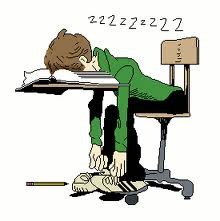Field sobriety tests, or FST’s, are exercises, that are used by law enforcement to help determine if a person is under the influence of alcohol and/or drugs. If a person performs poorly on the tests, they may be arrested and charged with drunk driving. Prosecutors then use the results of the FST’s to decide what charges to file and they will present FST evidence in court to prove their case.
There are only three tests that have been deemed reliable in determining if someone is under the influence. These tests are called the “standardized field sobriety tests.” They are the horizontal gaze nystagmus test (HGN), the walk and turn test, and the one-leg stand test. However, cops often use other non-standardized tests when conducting DUI investigations, including the finger-to-nose test, the Rhomberg balance test, and the finger count test.
According to the National Highway Transportation Safety Administration (NHTSA), there is a correlation between poor performance on the standardized FST’s and impairment for purposes of driving. They have published proper test protocols for law enforcement to determine if someone is under the influence. However, these tests are unreliable.
Often they are conducted using improper procedures and the clues are not assessed correctly, as they are often subjective. The instructions may be given erroneously or the person may not have understood them.
Even when the FST’s are administered properly, their reliability is questionable. There are many other factors that can make the test results inaccurate. For instance, a person may have a physical or mental impairment that makes his/her ability to perform a test difficult. There may be environmental issues that invalidate the test, such as inappropriate lighting, an uneven surface, or other distractions. In addition, the suspect’s “normal performance” or baseline for any of these tests is not known so there is no way to gauge performance on this occasion to determine if the person is under the influence.
If you have been arrested for drunk driving, and you have questions about the field sobriety tests that you performed and how they may impact your matter, contact The Law Offices of Susan L. Hartman today.
The above blog article is by no means all-inclusive and is not legal advice. For information about a specific case, speak to a drunk driving attorney in your area.
 San Diego DUI Lawyers Blog
San Diego DUI Lawyers Blog


 San Diego Police Sergeant John Iammarino, Detective Daniel Caropreso, Sergeant William Brown, and Sergeant Christopher Tivanian are all assigned to desk duty as the San Diego City Attorney’s Office investigates their involvement in a
San Diego Police Sergeant John Iammarino, Detective Daniel Caropreso, Sergeant William Brown, and Sergeant Christopher Tivanian are all assigned to desk duty as the San Diego City Attorney’s Office investigates their involvement in a  In the San Diego courts, if you plead guilty or you are convicted of a
In the San Diego courts, if you plead guilty or you are convicted of a  Under the California Vehicle Code, “It is unlawful for any person who is under the influence of any alcoholic beverage or drug, or under the combined influence of any alcoholic beverage and drug, to drive a vehicle.” (See
Under the California Vehicle Code, “It is unlawful for any person who is under the influence of any alcoholic beverage or drug, or under the combined influence of any alcoholic beverage and drug, to drive a vehicle.” (See 